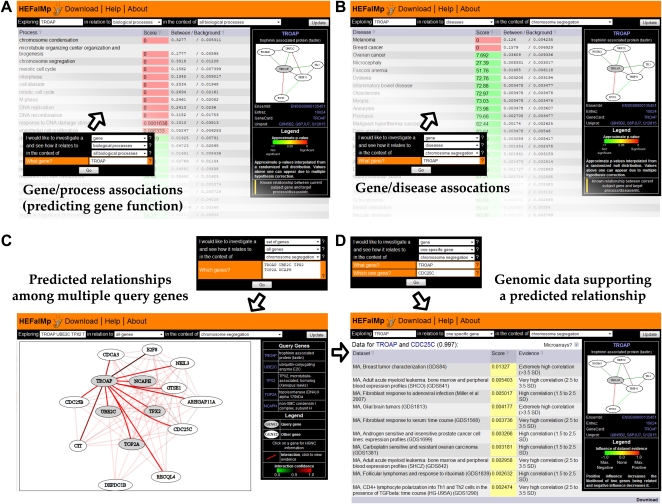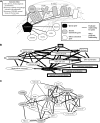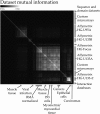
| PMC full text: |
|
Figure 4.

The HEFalMp tool for functional mapping. We have provided a web interface, the Human Experimental/Functional Map (HEFalMp), at http://function.princeton.edu/hefalmp for interactively exploring our predicted functional maps. A user can focus on a gene, gene set, biological process, or genetic disorder of interest and investigate its predicted associations with other genes, processes, or diseases. These predictions are presented using a variety of visualizations, and all data is downloadable for further analysis. (A) Associating a gene with biological processes. An investigator wishes to study which biological processes the TROAP protein is predicted to participate in. (B) Associating a gene with genetic disorders. In the context of one of TROAP's most likely biological processes, chromosome segregation, it is predicted to be particularly associated with genes causing melanomas and breast cancer. (C) Visualizing a predicted functional relationship network for specific genes. Focusing on a gene set consisting of TROAP, two of its most likely relationship partners (UBE2C and TPX2), and two of its most likely partners in chromosome segregation (TOP2A and NCAPH) retrieves a predicted functional relationship network specific to the area of chromosome segregation. (D) Viewing genomic data contributing to a prediction. Clicking on a predicted functional relationship or specifically focusing on TROAP's relationship with CDC25C displays the genomic data used to generate the prediction. Here, TROAP is predicted to relate to CDC25C, a highly conserved mitotic regulator, due to very high correlation between the genes' expression in a variety of microarray conditions. Taken together, this evidence suggests that TROAP is strongly cell cycle regulated and may play an as-yet-uncharacterized role in mitosis.




